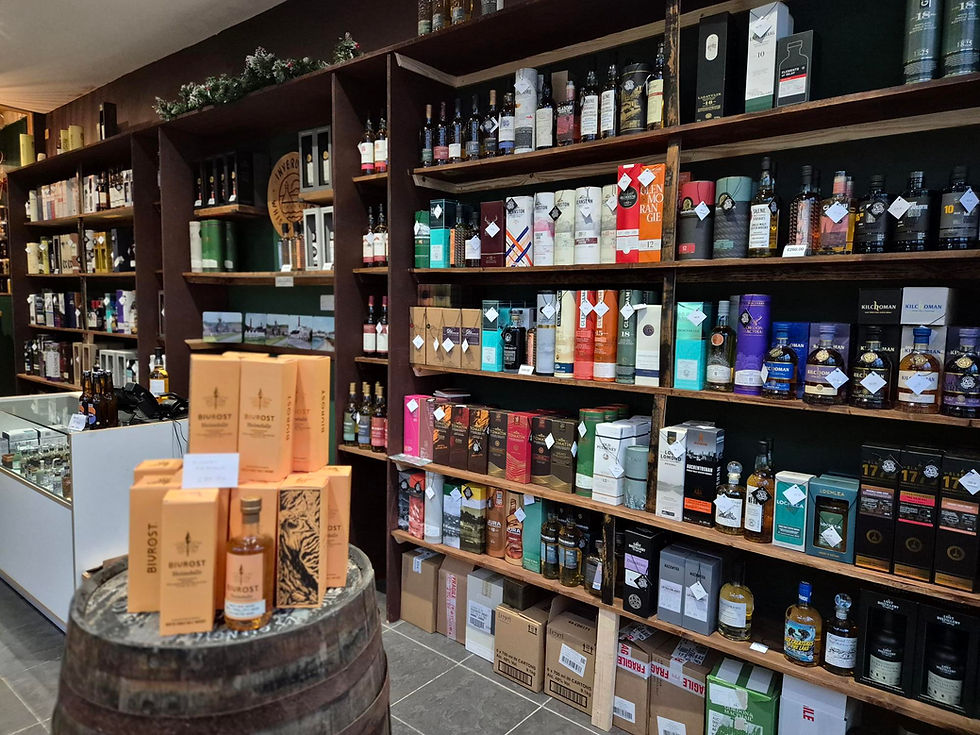- Paul Andrews

- Nov 3, 2023
- 4 min read

The British Museum has brought together more than 2000 years of artistic creation in this first permanent Peruvian exposition, housed in its Wellcome Trust Gallery. A highlight of the museum’s ‘Living and Dying’ exhibition, the free to view display focuses on how the people of Peru and the Andean world have survived and thrived across millennia by establishing a special relationship with sea and land. Experience a taste of the rich cultural heritage and soul of a nation before you visit Peru and explore its many wonders in person!
More than fifty exhibits made from ceramics, textiles, wood, stone and shell, tell stories about some of the most important civilizations of the ancient world. They shine a light on how these societies understood their environment as an animate being, sometimes threatening yet also a source of healing, subsistence and protection.
Mr Juan Carlos Mathews, Peru’s Minister of Foreign Trade and Tourism, commented at the opening ceremony, “The British Museum receives nearly seven million visitors annually so we are delighted that as from today, every single one of them will now be able to learn more about our pre-Columbian cultures such as the Moche, Nasca, Lambayeque, Chimú, Chincha and Ica. This experience is the perfect stepping stone for every traveller to our beautiful country!”
The sea section of the exposition encompasses both ancient and contemporary ways of living, exploring the riches of the ocean while recognising the threats of climate change and illegal fishing. Through artefacts and digital media, it highlights the importance of Pacific Ocean resources for the survival of ancient societies of the Central Andes, the continuous tradition from pre-Hispanic to present day of navigation and fishing in totora reed boats and the mythical symbolism associated with the spiny oyster, Spondylus and Strombus.
The second section of the display focuses on the land and its resources, which were seen as a natural force to provide life. Celebrations and fertility ceremonies to honour the Pachamama (Mother Earth), as well as agricultural traditions such as Chicha brewing are showcased. Through a selection of colourful Nasca pottery (200 B.C.-650 A.D.) and spectacular views of geoglyphs, the value of the land is explored as a sacred space that can be adapted for the needs of societies even in the most arid regions of the world. A selection of archaeological objects together with modern textiles will take the visitor on a journey through the complex system of Andean weaving as a tradition that has survived for over 5000 years and continues to be recognized worldwide for its exceptional quality, diverse techniques, striking iconography and symbolic value.
This exposition is the first permanent space devoted to stories about past and present cultures from the coast and highlands of South America. It will allow the British Museum to share and amplify the work of scholars, artists and members of source communities who have been working with the collection.
Cecilia Pardo Grau, Curator, said: "The Peru and the Andes permanent display, part of the Living and Dying Gallery at the British Museum, brings new stories about how Andean societies from the past and present have dealt with the world around them. Through fifty objects from different periods and places, this exhibit provides a glimpse of the enormous potential of what can be done with these fabulous collections. I hope it fosters new conversations and, simultaneously, enhances further collaborations with the communities these objects represent."
Lissant Bolton, Keeper of Africa, Oceania and the Americas, said: “It is wonderful to be able to display some of the amazing objects in the Museum’s Andean collections, including very beautiful ancient and modern textiles and marvellous ceramics. This Peru case brings new perspectives to questions about how different societies deal with the troubles of life, the theme of the Living and Dying Gallery.”
Ricardo Romero, Director, PromPeru London said at the official opening of the exhibition last night, “This is not the first time that the British Museum has exhibited the richness of Peruvian cultures. In 2021, the first temporary exhibition: “Peru: A Journey in Time,” was opened. Featuring 80 pieces from the British Museum’s own collection, and an additional 43 objects borrowed from across seven Peruvian museums, this exhibition attracted over 73,000 visitors in just four months."
"On the back of this success, the British Museum and PROMPERÚ have continued to work closely together to shed light on the beauty and history of Andean cultures. And now, for the first time in its 270-year history, Peru will have its own permanent space for the display of Peruvian cultural artefacts in one of the most iconic museums in the world.”
Peru received 71,322 tourists from the UK in 2019 making the UK the fourth largest European visitor to the country. Culture is the soul of a nation and Peru’s cultural heritage is unique and extraordinary. The British Museum’s new showcase doesn’t only represent Peru’s history and heritage however, it also celebrates the creativity, vitality and resourcefulness of its people.
The Trustees of the British Museum acknowledge with gratitude the generosity of Madeleine Osterling Letts, Macarena Rojas Osterling, and Cristina Rojas Osterling, alongside the continued support of PROMPERÚ, in creating this display and promoting the Peru programme.






